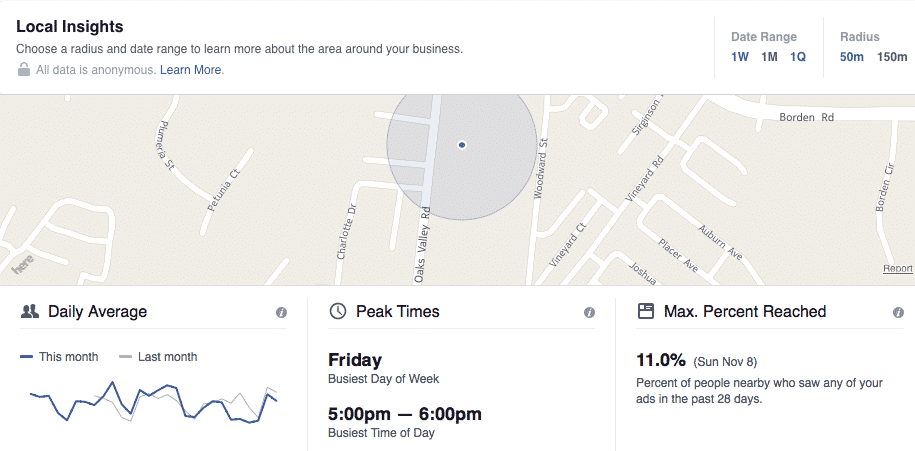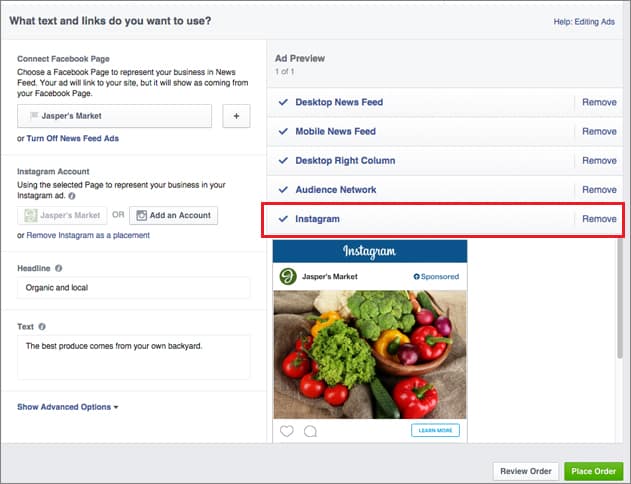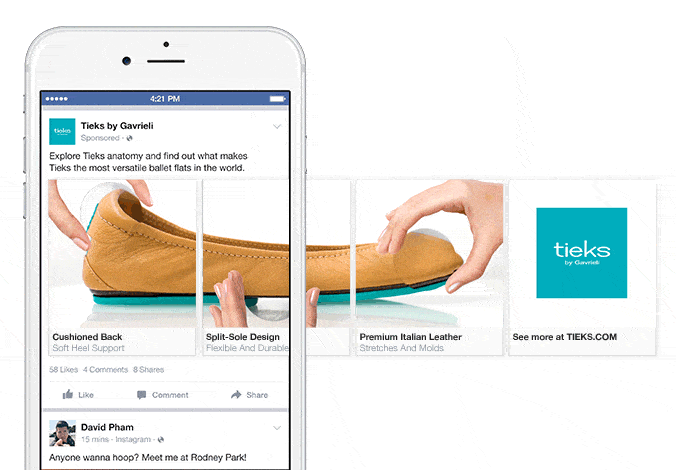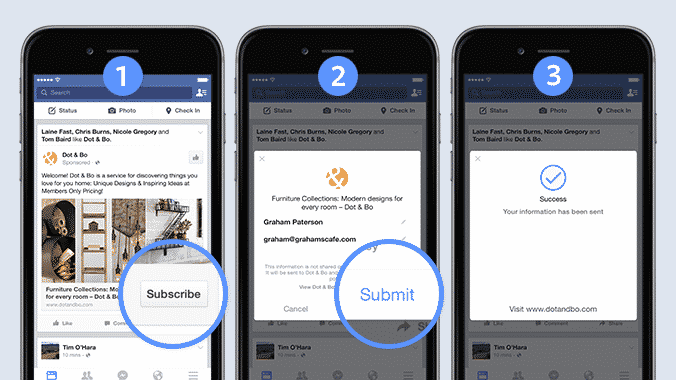Facebook is always making changes, and generally they are for the better. Some of Facebook’s most recent updates are intended to help businesses improve both their advertisements and business pages, while serving more relevant ads to users and making call to actions clearer. With over a billion people using Facebook daily, it’s important to make sure the user experience is constantly improved, as well as providing businesses with a better opportunity to connect.
That’s where the updates below come in handy. Diving head first into the New Year, you’ll need a strong approach to really make your Business Page stand out and increase connections with customers, while finding new business. Incorporate some, if not all, of the updates below to your Facebook advertising and marketing campaigns to have an effective plan of attack on social media’s #1 player.
Research Local Insights For Business Pages
Do you have or work with a business that has a storefront? Many businesses in America have multiple locations to market locally to and use their storefronts as their main source of revenue. Having data to track their local customers in not only helpful, but vital to improving marketing campaigns and advertising dollars.
Having data to track local customers in not only helpful, but vital to improving marketing campaigns and advertising dollars. The anonymous data tells Page Managers what time of day people are near their storefront most. You can research this data by choosing a date range in Local Insights, from one week to last quarter, and then a radius, either 50m to 150m, and analyze the peak times of the day where people are near a business the most. Use this data to fluctuate peak sale times, open and close times, and the time of day for posting updates on Facebook.
Start Advertising on Instagram Using Facebook
Instagram ads are finally available to everyone, not just the big corporate businesses, and is expected to bring in $595 million in mobile ad revenue this year. That means any business can now create and profit from Instagram ads using their Facebook Business page. You can create Instagram ads using both Ad Creation and Power Editor in Facebook.
Here’s how to quickly create an Instagram ad using the Ad Creation tool:
- Log into your Facebook Business page and begin creating an ad as usual by clicking “Create Ad”.
- Now it’s time to choose an ad objective. Instagram ads are limited on objectives and only allow you to choose from Clicks to Website, Website Conversions, Mobile App Installs, and Video Views.
- Once the objective has been set, choose the rest of the demographic and create the advertisement as usual. I recommend creating a Custom or Lookalike Audience tailored just to an Instagram demographic. The audience will still mimic many of the same traits as your normal demographic, but should have a few more specific interests that your Instagram users have over your Facebook Fans. Do thorough research to see how and if the two audiences differ.
- As you define demographic details and begin to create the ad and image copy (which should be 1080 by 1080 pixels), you’ll notice a new option in the Ad Preview section to add Instagram as a placement option. Either remove the rest of ad locations or keep them all to advertise an ad on both Facebook and Instagram.
Increase Your Local Reach With Local Awareness Ads
Facebook launched Local Awareness Ads last year, but has made a few updates to improve the local marketing experience on Facebook. One of their updates was to help enhance Local Awareness ads for businesses that have multiple locations using dynamic ad copy, links, and call-to-action buttons so each ad makes sense for each location. This will help relate ads to a user’s actual location, regardless of what part of New York they’re in. Experiment with A/B testing Local Awareness Ads against regular Post Engagement ads to see which ad gives your business more foot traffic.
Attempt to Get a Lower CPC With Carousel Ads
Carousel ads are as fun as they sound. Advertisers can display up to five different images and videos in a single News Feed ad that users can scroll across to view. Each image and video is clickable and directs Facebook users to either a URL or mobile app. This technique has been known to produce a lower cost-per-conversion at around 30-50% less than single-image link ads, making it a very attractive ad to both advertisers and users.
Carousel ads are also a great way to showcase how to use a specific product, give a tour of a business or app, and feature multiple blog images. Get creative with the placement of each image or video and tell a story through products. Create the best looking Carousel Ad by following Facebook’s design guidelines:
- Image size: 600 x 600 pixels
- Image ratio: 1:1
- Text count: 90 characters
- Headline count: 40 characters
- Link description count: 20 characters
Add a Call to Action Button to Your Business Page
Call to Action Buttons on Facebook Business pages aren’t exactly the newest Facebook update, but there are still many business pages that aren’t implementing the call to action feature. This button, that sits inside of the cover photo, is a great way to create engagement and action on mobile devices. You can choose an objective from the following:
- Contact Us – redirects to a website URL
- Book Now – redirects to a website URL
- Call Now – automatically calls the phone number
- Contact Us – redirects to a website URL
- Send Message – messages the business page
- Use App – links to the app on both Android and iPhone
- Play Game – – redirects to a website URL
- Shop Now – redirects to a website URL
- Sign Up — redirects to a website URL
- Watch Video- redirects to a website URL
You’ll notice 8 out of 10 buttons give the option to link to a website URL. Chose the URL wisely to create the most effective ROI. If you use the Shop Now button to increase online sales, link the button to a product page or newest arrivals page to encourage online shopping.
Get Leads Directly From Facebook
Although this is a Hallelujah moment, it doesn’t mean we can quit designing landing pages and A/B testing different headlines, yet. Lead ads on Facebook are fairly new and still going through Facebook’s rigorous testing process with a small number of global businesses.
The ad works by automatically populating a Facebook user’s information when they click on a call to action button within the ad. The basic information that a user submits when they sign up for Facebook is what’s populated (name, email, etc.), which is why the ad gives users an option to update their information before submitting.
The point of Lead ads is to remove that extra, extra, step we make users go through by clicking on a Facebook ad, then redirecting them to a landing page, and hoping they fill out a really exciting form. The Lead ads take away those messy extra steps and gives users the opportunity to do everything from within their News feed and continue on to scrolling through baby photos.
Good luck and let us know the features you think you will use most!





 Facebook
Facebook